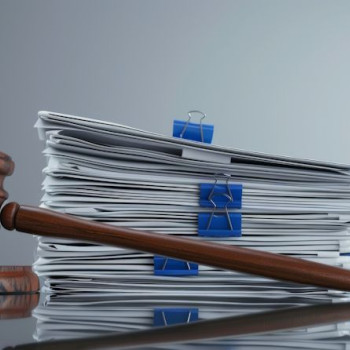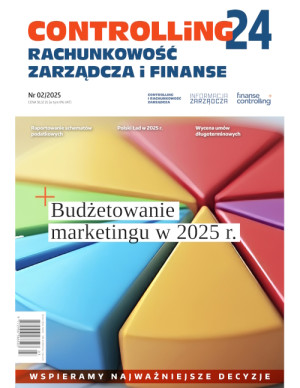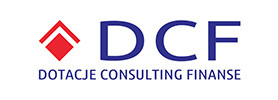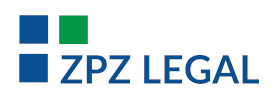The domestic1 rules of the balance sheet law and international accounting principles exhibit differences, both in terms of the definitions per se, as well as with reference to the subsequent operations on tangible items. In this paper we will discuss the measurement, the issue of depreciation and impairment of tangible items.
According to the definition of the Accounting Act (Article 3.1.15), the property, plant and equipment shall mean tangible non-current assets, with expected useful lives exceeding one year, that are complete, usable and intended for the entity’s own use. Respectively, they may include in particular: real property (land, perpetual usufruct of land, structures and buildings), machinery, equipment, vehicles, leasehold improvements and livestock. On the other hand, in accordance with IAS2 16 property, plant and equipment are tangible items that are expected to be used for the duration of more than one year, and they are used for the entity’s own use for its statutory objectives. Additionally, in order to be recognised as the property, plant and equipment, those items must be expected to bring economic benefits to the entity during their use.
Initial measurement of tangible items
Under the Polish balance sheet law, the property, plant and equipment shall be measured at cost, or at value as per the revaluation of the asset, less depreciation/amortisation charges and permanent impairment loss. On the other hand, property, plant and equipment under construction shall be measured as per the accumulated costs incurred, directly related to the acquisition and improvements (modernisation of property, plant and equipment under construction), subsequently reduced by permanent impairment loss. Thus, while determining the net value of the asset, we observe the following principles: we total all the costs incurred for the acquisition or production of the relevant asset, plus all the improvements (modernisation of property, plant and equipment) and reversals of impairment loss, less amortisation and permanent impairment loss
In accordance with IAS 16, the intangible assets are measurable according to the cost model or the revaluation model. If the cost model is adopted, the net asset value is determined as per the formula:
Acquisition cost + improvement and all other costs that directly link to the investment in the asset (including, but not limited to the Borrowing costs IAS 23) - (minus) depreciation - (minus) impairment = net value.
For the revaluation model:
Acquisition cost - depreciation - permanent impairment + periodic revaluation to fair value = net value 3.
Whereby, the acquisition cost shall be construed as the amount due to the counterparty, plus the costs of carriage, loading, unloading, assembly, insurance costs, stamp duty and other directly attributable costs.
Depreciation
Under the Polish balance sheet law, depreciation charges shall follow as systematic and planned allocation of the initial value over a specific depreciation period, having regard to the period of its economic useful life (Article 32.1 and Article 32.2). In addition, depreciation commences no earlier than when an asset has been commissioned for use. It is customary to commission tangible items at the end of the month in which the last expenses have been incurred in respect of the relevant tangible item before it has been put into use. Moreover, on the day of asset commissioning, the period, depreciation rate and depreciation method shall be determined. The specific depreciation rates should be reviewed from time to time over the depreciation period (with reference to the economic useful life of the asset), which prevents premature depreciation, expiration or excessively long depreciation period which would fail to coincide with the future economic benefits associated with the item that will flow to the entity. Depreciation ends when accumulated depreciation equals the initial costs of the item of property, plant and equipment or the relevant asset has been earmarked for scrapping.
Under the international balance sheet law, depreciation commences once the tangible item is fit for use as intended by the Entity. In addition, the depreciation period may not be longer than the period in which the asset is shown as one of the items of the balance sheets, whereas depreciation should end once the tangible item has been earmarked for sale (in accordance with IFRS 5). As regards the verification tasks, under IAS 16 the Entity is required to annually validate the rates, periods and depreciation methods (the Polish balance sheet law does not require an annual verification of the period of its economic useful life).
It is worth emphasising that as per IAS 16, so much attention has been given to the so-called depreciable amount, that is to say the initial value less the residual value. The more detailed examination of the Accounting Act provisions in Article 32.2.5 legitimises the conclusion that the Accounting Act facilitates (and even suggests) taking reference to residual value, although it does not explicitly mention this concept. At the same time, it proves even more reasonable as with the use of the residual value, any income from the disposal (sale) of the asset in a considerable aspect will coincide with the non-depreciated (residual) value, and thus it will have no impact on other operating expenses/income nor will it disrupt the structure of the profit and loss account.
Example
The Entity purchased a machine with an initial value of PLN 200,000. The machine was commissioned for use on 1 January 2017, whereas the first depreciation charge was made in January 2017. In addition, the Entity intends to use the machine for a period of five years, most likely followed by its sale. The approximate value of the 5-year-old machine of the same type stands at PLN 80,000. Accordingly, the depreciable amount is PLN 120,000 (PLN 200,000 - (minus) PLN 80,000), and the annual depreciation will be established at PLN 24,000.
Following up on the subject of depreciation, the depreciation methods may not be omitted.
Compared to the Accounting Act, IAS 16 gives clear guidance in this area, and even more so, it refers to rationality and to the observation of one of the overarching principles of reporting – matching of revenues and costs. Respectively, it facilitates taking recourse to the “natural” method – based on the number of product units manufactured with the relevant tangible item. We believe that it is reasonable to use – aside of the straight-line method or the diminishing balance method – also another method (by way of illustration, based on the number of units produced) for the reports made under the Accounting Act if this was to improve the quality of financial reporting and contribute to the compliance with the overriding principle of the balance sheet law.
To sum up the raised issue of depreciation, it is worth mentioning such issues as:
- depreciation of a group of assets, in many cases individually insignificant, but in total having their weight/impact on the financial statements,
- separate depreciation of the main part and components, or
- non-depreciation when the asset remains idle.
The above issues have received a lot of attention in IAS 16 (compared to the Accounting Act), and respectively the person making the financial statement and the management of the entity enjoy more opportunities to improve the quality of financial statements, whereas the users/stakeholders thereof could draw the relevant conclusions while examining financial data.
Impairment of assets
In accordance with IAS 36, the impairment of an asset occurs when evidence is available of obsolescence or physical damage of an asset, significant changes (with an adverse effect) will take place during the period or in the near future as regards the use of an asset (these changes include the asset becoming idle, restructuring or plans to dispose of an asset), or by way of illustration, internal reporting provides evidence concerning the decline in economic performance of an asset.
In the case of DAS 4, one may mention impairment, once the following issues have been considered:
- when the loss of asset market value that occurred during the reporting period is much higher than the loss that could be expected as a result of the flow of time or normal use,
- changes of an economic, market, technological or legal nature with an adverse effect on the Entity have taken place, or are expected to take place in the near future, in the environment in which the entity operates or in the market to the service of which the tangible assets of the entity are used,
- market interest rates or other market rates of return on investments have increased during the period, which are likely to affect the discount rate used in calculating an asset’s value in use and decrease the asset’s recoverable amount materially,
- there is evidence that physical damage to tangible assets has occurred – by way of illustration, it follows from the findings of a physical inventory, reports of production.
In other words, under both Polish and international balance sheet law it is essential that information (from both internal and external sources) shall be first identified, pointing out the possibility of impairment of asset. The next step is to carry out a test for impairment of fixed assets, that is to say, the current value (carrying amount) should be compared vis-à-vis the recoverable value, that is to say, the value in use and fair value, whichever is higher. A situation of impairment can be recorded via the following equation:
Current value > maximum
{fair value; value in use}
Example
The entity owns a machine of a significant (carrying amount) value of 1,000 PLN (75% of the balance sheet total); further to the planned changes of a political nature, exchange with foreign countries will post a considerable decline, whereas the machine that brings economic benefits might not be fully utilised. Forecasts of future cash flows have been presented as per the new budget approved by the entity management:
- PLN 240 (in year 1), PLN 205 (year 2), PLN 170 (year 3), PLN 100 (year 4) and PLN 100 (5)
- Following year 5, further declines in flows of about 10% are assumed, while the sale of the machine for PLN 400 is expected to occur following a total period of 10 years. What is the recoverable value and the possible impairment (fair value less costs to sell has been set at PLN 600)?
The Excel spreadsheet tool can easily show value in use, that is to say, discounted cash flows at a level close to PLN 977; respectively, for a further comparison with the carrying value of PLN 1 000 we “take” value in use, being the higher of fair value (PLN 600). On this basis, we note that the carrying amount is higher by approximately PLN 23 PLN over the recoverable amount, and accordingly – as far as is relevant to the financial statements – an impairment charge as regards this machine should be made.
Summary
In summary, the issue of tangible items, their measurement, depreciation or examination for impairment is a comprehensive issue that could be dealt with in a number of papers; the aim of this paper is, however, only to hint/compare differences and similarities between the Polish and international balance sheet law, and outline the issues that are ignored in a daily routine, which may lead to a material misstatement of the financial statements and adjustments in the course of their audit made by the statutory auditor.
Tangible items tasks
Task 1. Key phrases.
Read the text carefully and study the vocabulary. Translate the selected key words from the text into English:
- sugerować lub wskazówka : .......................
- rozumieć : ..................................................
- pozostały : ..................................................
- środki trwałe : ............................................
- rozpocząć : .................................................
- podmiot gospodarczy : ..............................
- starzenie się : ..............................................
- dzierżawny : ...............................................
- przydział : ..................................................
- ponosić koszty : .........................................
Task 2. Words in context.
Use the words from task 1 in correct forms to complete the sentences below:
- We have to be aware of the fact that suing MedExpo for the breach of contract will ........................ some extra ..................... which have not been included in our budget for this year.
- Before Facebook purchased Snap Chat for $19 billion, the company had been a privately owned .....................which provided texting services to its customers.
- The finance committee has decided to increase the ............................... of budgetary funds for statutory activities of student research circles of state universities.
- Although .........................can be destroyed by natural disasters or accidents, they can additionally be used as extra collateral to obtain bank loans.
- Contrary to a freehold estate, which is meant for an indefinite time-period, the ................... estate refers to the exclusive right to use property for a specified time-span.
- If you want to set up a company of your own, I will be more than happy to give you a few useful ........................ how to do it properly and not to get discouraged in the end.
- How are we supposed to .............................. the presentation of new IT system if we are forbidden to ask questions in the course of it?
- Due to strong whirlwinds and bad weather conditions throughout the country, the construction works will be ............................... no sooner than presumably in a fortnight’s time.
- If you lease a car for 3 years, its ............................. value is how much exactly it is worth after 3 years.
- By definition, planned is a well-known strategy of producing consumer ..........................goods which quickly become outdated or useless, and therefore need to be substituted with a new product version.
Task 3. Comprehension check.
Decide whether the sentences below are true (T) or false (F) according to the text:
- There are discrepancies between the domestic rules of the balance sheet law and international accounting regulations. ...........
- Perpetual usufruct of land has been excluded as a tangible asset from the Accounting Act. ...........
- Two different models can be adopted to determining the value of intangible assets in IAS ...........
- On the day of asset commissioning, only a relevant depreciation method needs to be implemented. ...........
- By subtracting the salvage value of an asset from its cost you get the depreciable value. ........
- One of the underlying rules of accounting says that costs and related revenues have to be recognized in the same period. ...........
- To assess the impairment of an asset we do not need to consider the recoverable value. ...........
- There is a special formula which enables to record the impairment of assets. ...........
- The issue of tangible items is a complex idea. ...........
- Just a few in-depth articles concerning the concept of tangible assets have been published so far. ...........
| Task 1 | Task 2 | Task 3 |
|---|---|---|
| (to,a) hint (to) construe residual tangible items/assets (to) commence entity obsolescence leasehold allocation (to) incur costs |
incure, costs entity allocation tangible items/assests leasehold hints construe commenced residual obsolescence |
T F T F T T F T T F |
Przypisy / Źródła / Podstawa prawna
- The Accounting Act (hereinafter referred to as the Accounting Act) and the Domestic Accounting Standards (hereinafter referred to as the DAS) shall be hereinafter construed as the domestic rules of balance sheet law, whether the principles of the International Financial Reporting Standards (hereinafter referred to as the IFRS) shall be construed as the international reporting standards.
- The International Accounting Standards are part of the IFRS in accordance with the definitions presented in IFRS.
- Further information about the revaluation model can be found in the literature, by way of illustration: http://www.rsmpoland.pl/pl/insights/rsm-poland-blog/rzeczowe-aktywa-trwale-model-przeszacowania-wg-msr-16










